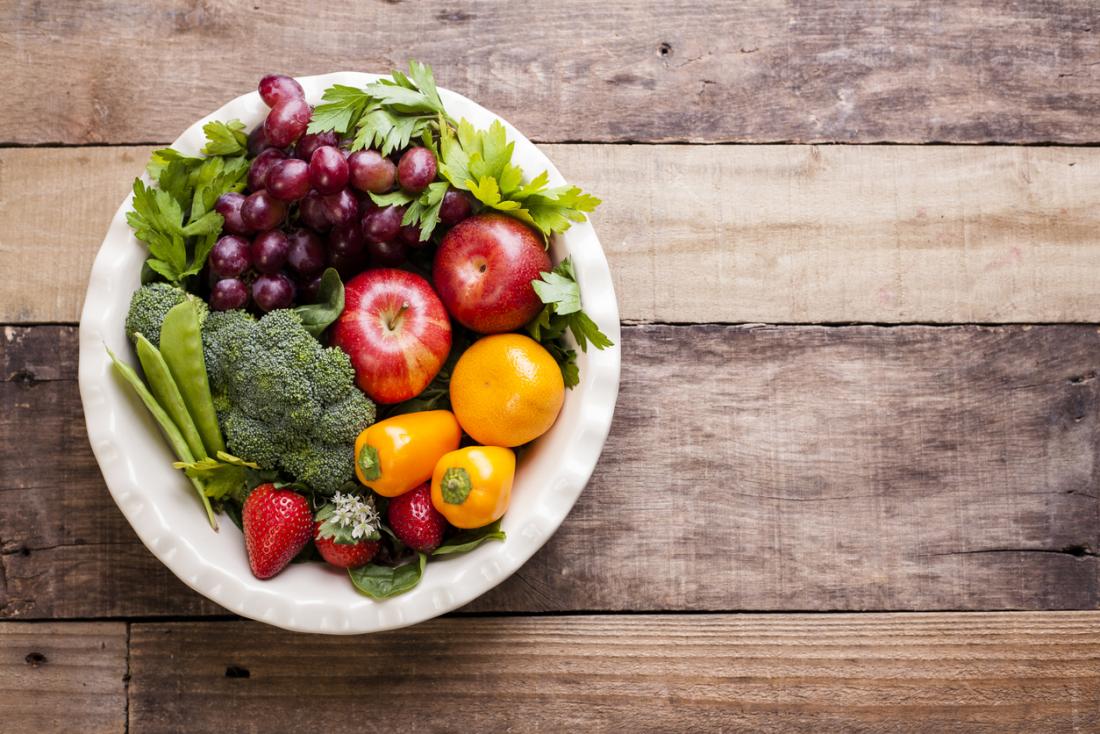There are numerous diets that promote weight loss, sometimes in an unhealthy way. Fad crash dieting, for instance, is potentially dangerous. The most important thing to remember, is that a balanced diet is the true secret to healthful eating.
Contents of this article:
Nuts, pulses, and grains
Nuts, pulses, and grains can be highly nutritious. Here are some of the best:
Almonds
First on our list is almonds. Almonds are rich in nutrients, including magnesium, vitamin E, iron, calcium, fiber, and riboflavin. A scientific review published in Nutrition Reviews found that almonds as a food may help maintain healthy cholesterol levels.
The authors wrote:
“The message that almonds, in and of themselves, are a heart-healthy snack should be emphasized to consumers. Moreover, when almonds are incorporated into a healthy, balanced diet, the benefits are even greater.”
Almonds have more fiber than any other tree nut.
Brazil nut
 Nuts, pulses, and grains are in important part of a healthy diet.
Nuts, pulses, and grains are in important part of a healthy diet.Brazil nuts, (Bertholletia excels) are some of the most healthful nuts on the planet. In Brazil, they are called ‘castanhas-do-pará’ – which translates as “chestnuts from Pará.” Pará is a state in northern Brazil.
They are rich in protein and carbohydrates. They are also excellent sources of vitamin B-1 (thiamine), vitamin E, magnesium, and zinc.
Not only that, but they contain one of the highest amounts of selenium of any food; selenium is a vital mineral for maintaining thyroid function.
The nuts come in a hard shell and are often served prepared ready to eat, making them an excellent and nutritious, healthful snack.
Lentils
Lentils are a pulse that is used in many cuisines throughout the world; notably, South East Asian countries like Pakistan, Nepal, Bangladesh, India, Bhutan, and Sri Lanka.
Lentils require a long cooking time, but the seeds can be sprouted which makes them ready to eat – and a delicious, healthy snack. Adding a container of sprouted lentils to a lunchbox or picnic basket, perhaps with some chili powder or pepper for flavoring, makes for a delicious and healthy snack.
Oatmeal
Oatmeal is meal made from rolled or ground oats. Interest in oatmeal has increased considerably over the last 20 years because of its health benefits.
Research found that the cereal’s soluble fiber content helps lower cholesterol levels. When these findings were published in the 1980s, an “oat bran craze” spread across the U.S. and Western Europe.
In 1997, the Food and Drug Administration (FDA) agreed that foods with high levels of rolled oats or oat bran could include data on their labels about their cardiovascular heart benefits if accompanied with a low-fat diet. This was followed by another surge in oatmeal popularity.
Oats are rich in complex carbohydrates, as well as water-soluble fiber, which slow digestion down and stabilize levels of blood-glucose. Oatmeal is rich in B vitamins, omega-3 fatty acids, folate, and potassium. Coarse or steel-cut oats contain more fiber than instant varieties.
Wheat germ
Wheat germ is the part of wheat that germinates to grow into a plant – the embryo of the seed. Germ, along with bran, is a by-product of milling; when cereals are refined, the germ and bran are often milled out.
Wheat germ is high in several vital nutrients, such as vitamin E, folic acid (folate), thiamin, zinc, magnesium, phosphorus, as well as fatty alcohols and essential fatty acids. Wheat germ is also a good source of fiber.
Greens, fruits, and berries
Greens, fruits, and berries are easy to add to an existing diet:
Broccoli
 Fruits, leafy greens, and vegetables contain vital nutrients and fiber.
Fruits, leafy greens, and vegetables contain vital nutrients and fiber.Broccoli is rich in fiber, calcium, potassium, folate, and phytonutrients. Phytonutrients are compounds that reduce the risk of developing heart disease, diabetes, and some cancers. Broccoli also contains vitamin C, as well as beta-carotene, an antioxidant.
A single 100-gram serving of broccoli can provide you with over 150 percent of the recommended daily intake of vitamin C, which in large doses can potentially shorten the duration of the common cold.
Another ingredient, sulforphane, is also said to have anti-cancer and anti-inflammatory qualities.
However, overcooking broccoli can destroy many of its nutrients. Eating it raw, or lightly steamed is best.
Apples
Apples are an excellent source of antioxidants, which combat free radicals. Free radicals are damaging substances generated in the body that cause undesirable changes. They are involved in the aging process and some diseases. Some animal studies have found that an antioxidant found in apples (polyphenols) might extend lifespans.
Researchers at Florida State University said that apples are a “miracle fruit.” In their study, the investigators found that older women who started a regime of eating apples daily experienced a 23 percent drop in levels of bad cholesterol (LDL) and a 4 percent increase in good cholesterol (HDL) after just 6 months.
Kale
Kale is a very underrated leafy green. There are a lot of different nutrients contained within the leaves of kale.
Vitamin C is a nutrient of kale, and, according to the United States Department of Medicine (USDA), it contains a substantial amount of vitamin K, 817 micrograms or 778 percent of the recommended daily intake.
Kale can be cooked or steamed like cabbage, spinach, or asparagus. It can also be consumed in smoothies or juiced for a revitalizing nutrient kick.
Blueberries
Blueberries are rich in fiber, antioxidants, and phytonutrients. Unlike minerals and vitamins, phytonutrients are not essential for keeping us alive. However, they may help prevent disease and keep the body working properly.
According to a study carried out at Harvard Medical School, older adults who eat plenty of blueberries (and strawberries) are less likely to suffer from cognitive decline, compared with other people of their age who do not.
Scientists at Texas Woman’s University found that blueberries help in curbing obesity. Plant polyphenols, which are abundant in blueberries, have been shown to reduce the development of fat cells (adipogenesis), while inducing the breakdown of lipids and fat (lipolysis).
Regular blueberry consumption can reduce the risk of hypertension (high blood pressure) by 10 percent, because of the berry’s bioactive compounds, anthocyanins. Scientists from East Anglia University and Harvard University reported in the American Journal of Nutrition.
Avocados
Many people avoid avocados because of their high fat content; they believe that avoiding all fats leads to better health and easier-to-control body weight – this is a myth. Avocados are rich in healthy fats, as well as B vitamins, vitamin K, and vitamin E and have a very high fiber content. Studies have shown that regular avocado consumption lowers blood cholesterol levels.
Avocado extracts are currently being studied in the laboratory to see whether they might be useful for treating diabetes or hypertension. Researchers from Ohio State University found that nutrients taken from avocados were able to stop oral cancer cells, and even destroy some of the pre-cancerous cells.
Leafy green vegetables
Studies have shown that a high intake of dark-leafy vegetables, such as spinach or cabbage, may significantly lower a person’s risk of developing type 2 diabetes. Researchers at the University of Leicester said that the impact of dark green vegetables on human health should be investigated further after they gathered data from six studies. They reported their findings in the BMJ.
Spinach, for example, is very rich in antioxidants, especially when uncooked, steamed, or very lightly boiled. It is a good source of vitamins A, B-6, C, E, and K, as well as selenium, niacin, zinc, phosphorus, copper, folic acid, potassium, calcium, manganese, betaine, and iron.
Sweet potatoes
Sweet potatoes are rich in dietary fiber, beta-carotene (vitamin A), potassium, vitamin C, and vitamin B-6.
The Center for Science in the Public Interest compared the nutritional value of sweet potatoes to other vegetables. The sweet potato ranked number one, when vitamins A and C, iron, calcium, protein, and complex carbohydrates were considered.
Fish, meat, and eggs
When looking for healthy protein, it is difficult to know which is the best source. Here are some of the best:
Oily fish
 Salmon, eggs, chicken, and venison are all excellent sources of protein.
Salmon, eggs, chicken, and venison are all excellent sources of protein.Examples of oily fish include salmon, trout, mackerel, herring, sardines, and anchovies. These types of fish have oil in their tissues and around the gut.
Their lean fillets contain up to 30 percent oil, specifically, omega-3 fatty acids. These oils are known to provide benefits for the heart, as well as the nervous system.
Oily fish provide benefits for patients with inflammatory conditions, such as arthritis. They are also rich in vitamins A and D.
Scientists at UCLA’s Jonsson Comprehensive Cancer Center found that prostate cancer progression was significantly slowed when patients went on a low-fat diet with fish oil supplements.
Chicken
Chicken is a cheap and healthy meat. Free-range chicken provides an excellent source of protein.
As a white meat, chicken can be consumed much more freely than other red meats such as beef, which can have a more damaging long-term impact on overall health.
It is important to remember that the preparation and cooking of chicken has an impact on how healthy it is. This means deep-fried chicken should be limited or avoided. It’s also important to remove the skin, as this part of the chicken contains high levels of fat.
Eggs
Eggs are another source of protein that can easily be incorporated into a balanced diet. Being very versatile, they can be added to many meals – not just breakfast.
They contain other vitamins, including vitamin B-2, also known as riboflavin, and vitamin B-12, both of which are important for energy and red blood cells. It is also a good source of the essential amino acid leucine, which is important for stimulating muscle protein synthesis.
The yolk of the egg contains the majority of the vitamins and minerals. It also contains the fat and cholesterol, however, research has shown that eggs do not increase the risk for heart disease. Consuming fat in moderate amounts is perfectly healthful.
Balance and moderation
Overall it is important for health to have a balanced diet and one that does not focus on one specific type of food.
It’s also important to remember that a treat once in a while can be a part of a balanced diet, and one that is very healthful overall.





























